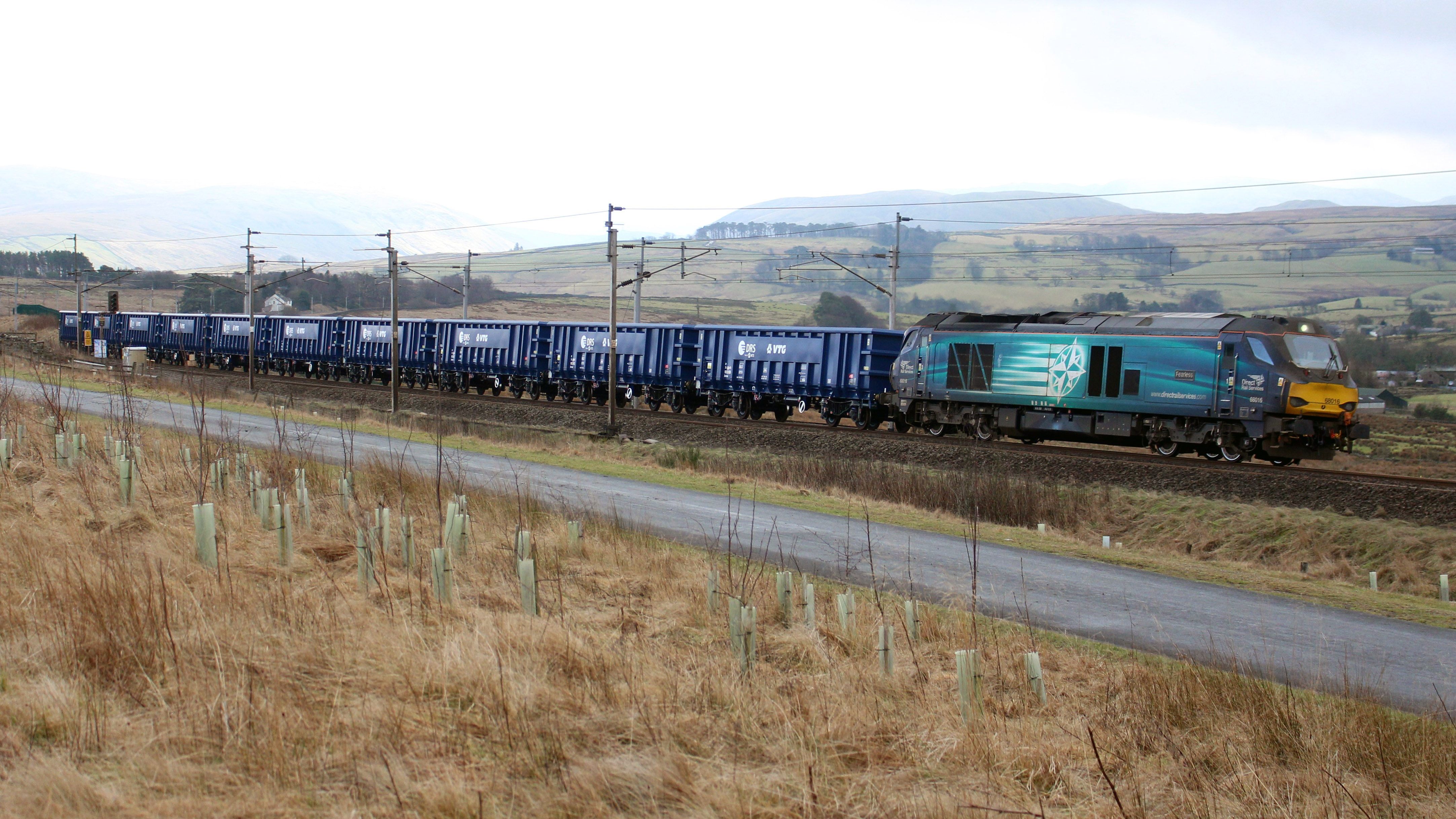4 February 2025
In the first tranche of rail services –
- 100,000 kg of CO2 emissions saved
- 150,000 lorry miles prevented
- 2,320 lorry journeys taken off the road
Direct Rail Services (DRS) has begun moving over 46,000 tonnes of material by rail, yielding significant environmental benefits.
Nuclear Transport Solutions’ rail division, DRS, has launched a new rail service to deliver aggregate for a project vital to the safe and secure disposal of nuclear waste.
During the first campaign, DRS will operate two trains a day, four days a week, to Nuclear Waste Services’ (NWS) Low Level Waste (LLW) Repository site, in Cumbria. The trains will deliver aggregate for the Southern Trench Interim Membrane (STIM) project – a project to replace a protective barrier over the legacy disposal trenches at the site.
The trains mean fewer HGVs will be required for the project, and rail transport produces up to 76% less CO2 compared to road traffic, saving around 100,000 kg in CO2 emissions in this first tranche of rail services.
This marks the first time DRS has used its JNA-Z box wagons, with each train delivering over 750 tonnes of material – the equivalent of 36 HGVs.
This is the first in a series of material deliveries as part of the project, delivering 46,400 tonnes of aggregate over 64 trains, and it’s estimated that 2,320 lorry journeys will be saved in this stage alone – removing over 150,000 road miles.
Further trains will be run in other stages over the project’s three-year duration, making the journey from Shap quarry to the LLW Repository, near Drigg.
Gottfried Eymer, NTS Rail Managing Director, said: “Rail is the obvious choice for bulk movements like these, taking many thousands of lorries off the road, reducing congestion, and improving the environment.
“This is the first of many movements for our box wagons, and I look forward to seeing them running across the country.”
